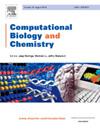53BP1的协同进化动力学及其对DNA损伤修复中TP53相互作用的影响
IF 2.6
4区 生物学
Q2 BIOLOGY
引用次数: 0
摘要
p53结合蛋白1 (53BP1)是通过非同源末端连接(NHEJ)修复DNA损伤所必需的,并通过与肿瘤抑制蛋白p53 (DNA损伤反应(DDR)的关键调节因子)相互作用,在维持基因组稳定性方面发挥重要作用。本研究探讨了53BP1中协同进化的作用及其对结构完整性和与p53结合亲和力的影响。通过多序列比对和系统发育分析,我们鉴定出72个共同进化的氨基酸残基群,其中5个被定位到53BP1的BRCT结构域。利用点突变作图和DynaMut稳定性分析对这些残基的突变效应进行了评估,并对第12组和第16组进行了详细评估。对接研究显示,共同进化诱导的修饰增强了53BP1-p53的相互作用,第12组表现出最高的结合亲和力(-9.9 kcal/mol),其次是第16组(-9 kcal/mol),两者都优于野生型(-8.9 kcal/mol)。这些修改导致了新的相互作用,有助于整体结构的稳定性。我们的研究结果强调了共同进化在形成蛋白-蛋白相互作用和维持53BP1蛋白结构和功能完整性方面的重要性。本文章由计算机程序翻译,如有差异,请以英文原文为准。
Coevolutionary dynamics of 53BP1 and its impact on TP53 interaction for DNA damage repair
The p53-binding protein 1 (53BP1) is essential for DNA damage repair via non-homologous end joining (NHEJ) and plays a crucial role in maintaining genomic stability by interacting with the tumor suppressor protein p53, a key regulator of the DNA damage response (DDR). This study investigates the role of coevolution within 53BP1 and its impact on structural integrity and binding affinity with p53. Through multiple sequence alignment and phylogenetic analysis, we identified 72 coevolving groups of amino acid residues, five of which were mapped to the BRCT domain of 53BP1. Mutational effects on these residues were assessed using point mutation mapping and stability analysis via DynaMut, with a detailed evaluation of groups 12 and 16. Docking studies revealed that coevolution-induced modifications enhanced 53BP1-p53 interactions, with group 12 exhibiting the highest binding affinity (-9.9 kcal/mol), followed by group 16 (-9 kcal/mol), both outperforming the wild-type (-8.9 kcal/mol). These modifications resulted in novel interactions that contributed to overall structural stability. Our findings highlight the significance of coevolution in shaping protein-protein interactions and maintaining the structural and functional integrity of 53BP1 protein.
求助全文
通过发布文献求助,成功后即可免费获取论文全文。
去求助
来源期刊

Computational Biology and Chemistry
生物-计算机:跨学科应用
CiteScore
6.10
自引率
3.20%
发文量
142
审稿时长
24 days
期刊介绍:
Computational Biology and Chemistry publishes original research papers and review articles in all areas of computational life sciences. High quality research contributions with a major computational component in the areas of nucleic acid and protein sequence research, molecular evolution, molecular genetics (functional genomics and proteomics), theory and practice of either biology-specific or chemical-biology-specific modeling, and structural biology of nucleic acids and proteins are particularly welcome. Exceptionally high quality research work in bioinformatics, systems biology, ecology, computational pharmacology, metabolism, biomedical engineering, epidemiology, and statistical genetics will also be considered.
Given their inherent uncertainty, protein modeling and molecular docking studies should be thoroughly validated. In the absence of experimental results for validation, the use of molecular dynamics simulations along with detailed free energy calculations, for example, should be used as complementary techniques to support the major conclusions. Submissions of premature modeling exercises without additional biological insights will not be considered.
Review articles will generally be commissioned by the editors and should not be submitted to the journal without explicit invitation. However prospective authors are welcome to send a brief (one to three pages) synopsis, which will be evaluated by the editors.
 求助内容:
求助内容: 应助结果提醒方式:
应助结果提醒方式:


